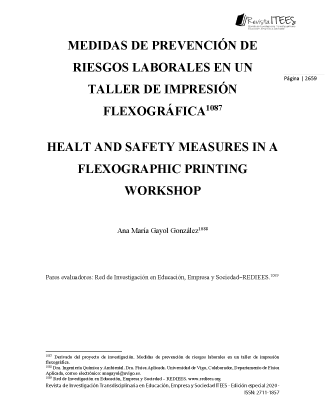CXXXIX. HEALT AND SAFETY MEASURES IN A FLEXOGRAPHIC PRINTING WORKSHOP
##plugins.themes.bootstrap3.article.main##
Abstract
In the 20th century, the flexographic printing technique was developed, which is currently
widely used worldwide, mainly in the printing of labels, adhesives, plastics. It is about
making long runs and this type of machine is usually in continuous operation. They only stop
for maintenance and adjustments.
This workshop presents all kinds of occupational risks, from safety by the machine itself,
hygiene by the inks and solvents used for cleaning. The size and weight of the coils must also
be considered since their weight is high and mechanical means are required for their
placement.
Depending on the end use of the support or substrate used, the type of ink that is most suitable
for said application is decided, since the drying time is different and, in the specific case of
the food industry, several factors must be considered.
In the finally commercial use, mainly UV inks are used, because the drying time is faster and
a much greater print run is obtained in less time, even if adaptation must be made for drying
in the machine.
In conclusion, highlight that development has been very important in recent years.
Download Statistics
##plugins.themes.bootstrap3.article.details##
flexography, ink, support, risks, solvents.
https://zonten-europe.com/es/maquina-flexografica-lry-330-450/
Federación Empresarial de Industrias Gráficas de España (2001) Guía para la evaluación y
control de riesgos laborales en las pequeñas y medianas empresas del sector de artes
gráficas. FEIGRAF





